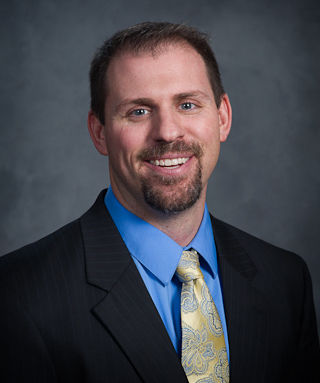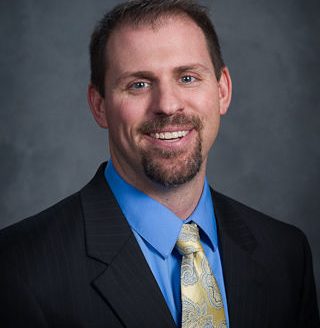Limited transmission capacity slows new rural solar, wind opportunities

Solar and wind energy projects have grown increasingly common in United States agriculture over the past 15 years, bringing considerable benefits to farmers, ranchers, ag processors and rural landowners.
But we’re seeing a slowdown in the growth of these renewable energy projects in certain rural areas, says my colleague Robert Veldman, senior land management advisor at Pinion. The reason?
“Transmission capacity is congested, and adding more is a slow process,” he says.
There aren’t enough transmission lines with capacity in the U.S. to support the transition to a clean energy grid, notes Veldman. Yet more transmission capacity is key to our energy future. We need it to support the new renewable energy projects coming online, especially the growing number of electric vehicles and other technologies requiring electricity.
In its recent Transmission Needs Study, the U.S. Department of Energy said 47,300 gigawatt-miles of new transmission will be needed nationwide by 2035. That’s a 57% growth from today’s transmission system. Regions in greatest need of transmission growth are the Southeast, Texas, the Plains and the Midwest.
Across the Plains—an area covering the Texas Panhandle, Oklahoma, Kansas, Nebraska and the Dakotas—a 119% increase of new transmission will be needed by 2035 to meet demand. “Current utility plans for transmission development in the Plains do not meet this anticipated need,” the study adds.
Texas will require a “significant increase in transmission deployment”—a 140% increase—to meet projected generation and demand growth by 2035, the study further notes. Veldman says developers have told him the Texas Panhandle is especially congested and limited in transmission capacity.
Challenges for expanding transmission systems
Limited transmission capacity is a major challenge for rural America’s renewable energy opportunities. That’s because energy from solar panels and wind turbines can’t be connected to the electricity grid if there isn’t enough transmission capacity to safely distribute their power to the right markets.
Solar and wind projects must sit within 1.5 miles of a transmission line or substation, Veldman says. Many locations with potential for such projects remain untapped because they sit too far away from transmission lines. Without access to these “power highways,” they can’t connect to the electricity network.
Hurdles to building more transmission capacity include the lengthy interconnection application process, permitting across states, opposition and siting issues. Many transmission projects are taking 10 years or more even to get to construction, Veldman says.
The process for existing transmission starts with a developer or utility company making an interconnection request. Then it winds through a series of studies on project feasibility, facilities and system impact. If developers and utilities make it that far, there’s still the interconnection agreement on operational terms and cost responsibilities. Only after that can a project be built and reach commercial operation.
“It’s a very competitive process,” Veldman says.
High land-rent costs and added fees can also stand in the way of building new transmission lines. Many projects prove to be economically unsustainable. For example, CNBC reports that a North Carolina renewable energy company in 2020 expected its solar project would cost $5 million to connect to the electric grid. The company later learned the interconnection process would be more than $30 million, leading it to terminate the project.
For an idea of the cost of new transmission lines, TexasElectricityRatings.com reported last August that in 2008, a Texas consortium of six companies filed a proposal of $4.93 billion to build 24,000 miles of transmission lines. “It’s safe to say that this same investment in 2022 would cost hundreds of millions, if not billions, of dollars more,” the website says.
Most project proposals are withdrawn when faced with these realities. But even when a new transmission line is underway, more issues arise.
“You can have up to 30 projects trying to apply to access that transmission line,” Veldman says. “Utility companies are overwhelmed.”
Long-term opportunities are still there
Sign up for HPJ Insights
Our weekly newsletter delivers the latest news straight to your inbox including breaking news, our exclusive columns and much more.
Despite the transmission capacity constraints, Veldman remains optimistic that solar and wind energy generation will play a significant role in the future of U.S. agriculture.
The two renewables offer clear benefits to farmers, livestock operations and processing plants. A wind or solar project can provide new revenue streams, giving flexibility for land expansion. In addition to feeding energy into the broader electricity grid, many renewable-energy adopters are using wind or solar to power their own ag operations, behind the meter, for reduced, more reliable costs.
Moreover, recent legislation, including the Infrastructure Act and the Inflation Reduction Act of 2022, calls for more renewable energy construction to further expand green opportunities in rural America. That’s good news for those interested in pursuing wind, solar and even methane digester projects. Grants, tax credits and other resources are available from the U.S. Department of Agriculture and other government agencies for renewable energy development.
Although Veldman says many rural areas face five- to 10-year lease options on land prior to possible construction for renewable energy projects, he believes there is still significant momentum for energy opportunities. Whenever those arise, rural landowners should take the right steps before signing wind and solar leases, which can be complicated.
“If you’re approached with a solar or wind lease opportunity, seek competent help so you can make informed decisions,” Veldman says.
Editor’s note: Maxson Irsik, a certified public accountant, advises owners of professionally managed agribusinesses and family-owned ranches on ways to achieve their goals. Whether an owner’s goal is to expand and grow the business, discover and leverage core competencies, or protect the current owners’ legacy through careful structuring and estate planning, Max applies his experience working on and running his own family’s farm to find innovative ways to make it a reality. Contact him at [email protected].

